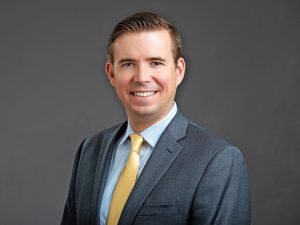Call to Arms
By Michelle Dellinger
Appears in the June 2021 issue.

It was a lab full of rats and a neighbor’s invitation that would start the trajectory toward Grant Garrigues’s career as an orthopedic surgeon. “I studied engineering at Harvard and MIT—I thought I was going to be a researcher,” says the shoulder and elbow specialist for Midwest Orthopaedics at Rush (drgshoulder.com).
“While I was working on neuroscience studies, building electrodes to record rat brains, I had a neighbor who was a neurosurgeon, and he invited me to watch this procedure where a man’s tremor went away immediately. I thought, That’s exactly where I want to be—something that’s dealing with human beings.”
After working at Duke University for almost 10 years, Garrigues came to the Rush system and currently sees patients at at three Chicagoland offices and affiliate hospitals, treating everything from rotator cuff tears and shoulder arthritis to clavicle fractures and joint replacements. Like everyone else’s professional life, Garrigues’s work has been affected by COVID-19.
“We saw a complete absence of sports-related injuries during the pandemic,” he says, “but now that people are out and being more active again, we are seeing a rise in injuries.”
Another recent patient complaint? Shoulder instability due to the challenges of working from home, on a couch or kitchen table, without a proper desk and monitor.
“When people work on a laptop, the screen is physically attached to the keyboard, which is terrible for your posture,” says Garrigues. That rounded stance puts a lot of tension in the areas around the shoulder, he says, which can lead to rotator cuff tears, shoulder bursitis, and bicep problems.
“The best treatment is prevention,” says Garrigues. “It’s not good to be in the same stooped posture all the time. Take breaks, get up, stretch out, get your arms up over your head, and do exercises to bring the shoulder blades back together.”
In addition to juggling the demands of patient care throughout the suburbs, Garrigues has served as a co-physician for the White Sox for the past three years, a role he truly enjoys. “It’s great to be part of that team,” he says. “We go to spring training to check on all the athletes, and we cover all the home games. The club does a great job of making sure everyone gets excellent medical care.”
His favorite part of his White Sox role? Being able to take his two sons, ages 6 and 9, to work with him. “I pick a lot of the weekend games,” says the Hinsdale resident. “The kids love to watch in the stands while I’m working with the athletes. They are avid White Sox fans.”
Photo courtesy Rush


